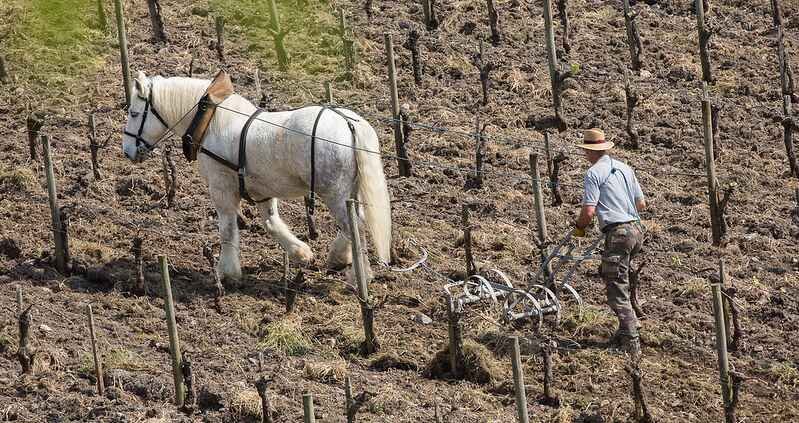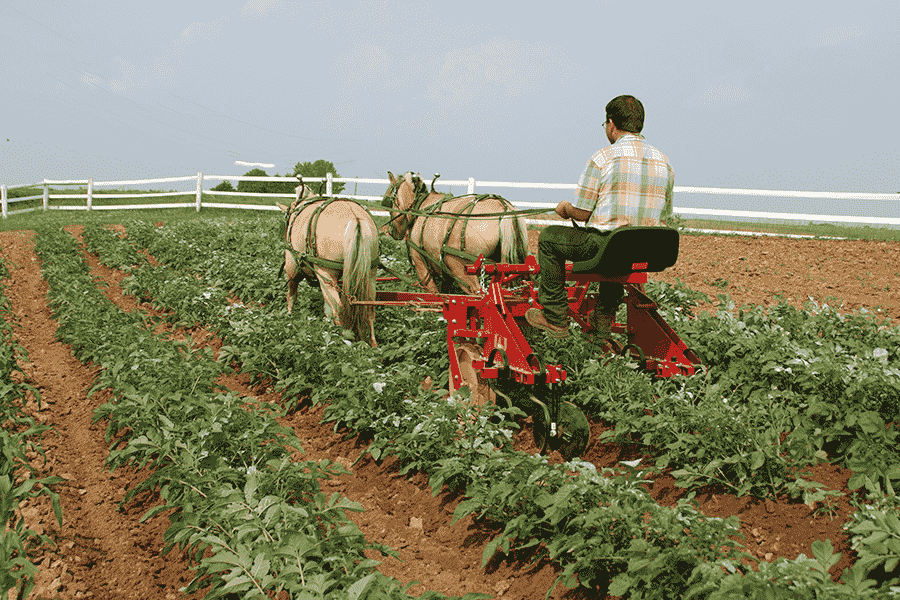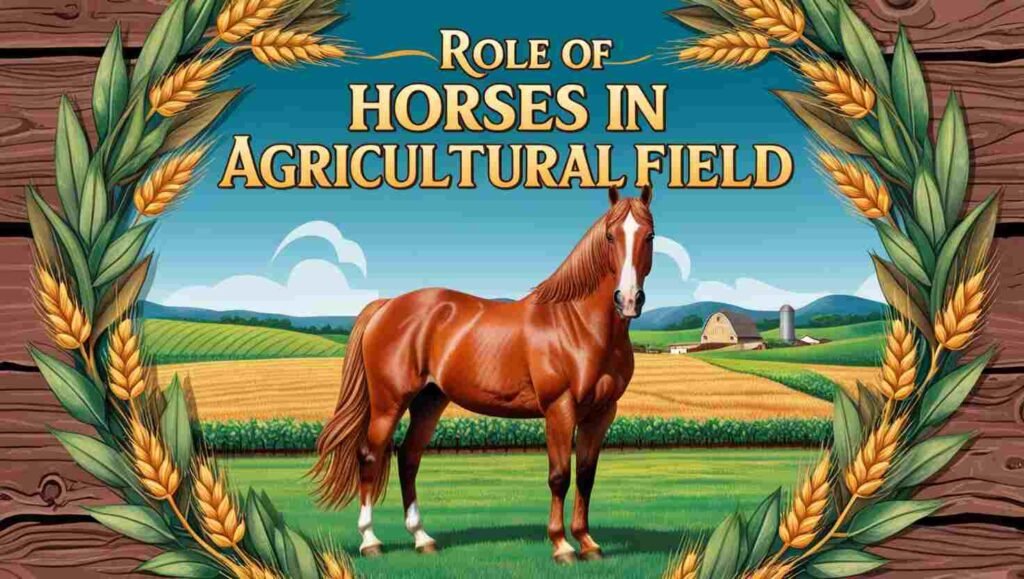Horses have served as vital partners in agriculture for centuries, significantly enhancing farming practices across the globe. Their strength, endurance, and adaptability make them invaluable assets on the farm. This article explores the historical significance, modern uses, benefits, challenges, cultural perspectives, economic implications, and future of horses in agriculture.
Horses have long been vital to agriculture, but proper care is essential to keep them healthy and efficient. Learn more about horse nutrition, feeding, and care and understand how far and for how long a horse can run to optimize their use in farming.
Historical Significance of Horses in Agriculture
- Early Domestication: Horses were among the first domesticated animals, with evidence suggesting their use for agricultural purposes dating back to 4000 B.C. They transformed agriculture by providing the necessary strength for plowing and transportation.
- Power Source: Before the introduction of machinery, horses were essential for plowing fields, hauling goods, and transporting crops to market. Their ability to work long hours made them indispensable in pre-industrial farming societies.
- Cultural Importance: In many cultures, horses symbolize strength, fertility, and prosperity. They have played crucial roles in agricultural festivals and events, reflecting their significance in human history.
Historical Case Studies
- The American Midwest: In the late 19th century, the Midwest relied heavily on draft horses for farming. Their use allowed farmers to break tough prairie soil, making large-scale agriculture possible and enabling communities to flourish.
- The Netherlands: In regions like the Netherlands, the heavy draft horse, specifically the Belgian, was essential in agriculture for centuries. Their strength enabled farmers to cultivate wet and heavy soils, leading to successful crop production.
Horses in Different Cultures
- Cleveland Bay (England): This breed has a rich history, often used in agricultural settings for its strength and versatility. They are known for their calm demeanor and ability to pull heavy loads.
- Kisber Felver (Hungary): Known for its agility and endurance, this breed has been utilized for both riding and farm work, showcasing how different cultures adapt horse use based on their unique needs and environments.
Horse-Assisted Agriculture
Horse-assisted agriculture incorporates horses into therapy and bonding activities for farm workers. This approach improves mental health and fosters a deeper connection between workers and their animals, contributing to a holistic approach to agriculture.
Comparison with Other Draft Animals
| Animal | Advantages | Disadvantages |
| Horses | Versatile, faster, and more agile | Requires more care and management |
| Oxen | Strong and steady, great for heavy loads | Slower and less agile than horses |
| Mules | Hardy, less prone to illness | Less commonly available than horses |
| Donkeys | Excellent for smaller tasks, hardy | Limited power compared to horses |
Environmental Benefits
Using horses contributes positively to soil health in several ways:

- Soil Structure: Horses produce less compaction than machinery, which is vital for maintaining soil health.
- Natural Fertilizer: Horse manure is rich in nitrogen, phosphorus, and potassium, making it an excellent organic fertilizer. Studies show that it enhances soil fertility without the negative effects of synthetic fertilizers.
Horse Health and Nutrition
To ensure optimal performance, working horses require specific health and nutritional care:
- Balanced Diet: Horses need a diet rich in fiber, vitamins, and minerals. Access to high-quality hay and pasture is essential.
- Veterinary Care: Regular check-ups are crucial to monitor for common issues such as lameness, colic, and dental health.
Horse-Powered Innovations

Innovative developments have emerged to maximize the efficiency of horses in agricultural tasks:
- Advanced Equipment: New horse-drawn implements, such as lightweight plows and seeders, have been designed for efficiency and ease of use.
- Renewable Energy Integration: Some farms explore ways to integrate horse power with renewable energy systems, creating hybrid approaches to farming.
Sustainability and Carbon Footprint
Using horses in farming can significantly reduce carbon footprints compared to machinery:

- Lower Emissions: Horses produce no carbon emissions, while farm machinery contributes to greenhouse gas emissions. Traditional horse power can be a more sustainable option for farming.
Education and Training Programs
Several organizations provide training for farmers on integrating horses into agricultural practices effectively:
- Workshops and Certifications: Programs focusing on sustainable farming practices often include training on horse handling, care, and agricultural applications.
- Online Resources: Many educational platforms now offer courses and resources on horse-powered farming, making knowledge accessible to a wider audience.
Economic Benefits of Horse-Powered Farming
Utilizing horses in agriculture can also have economic advantages:
- Cost Savings: Horses can reduce the need for fuel and expensive machinery maintenance, leading to cost savings for small-scale farmers.
- Market Demand: There is a growing market for organic produce, and using horses aligns with the principles of sustainability that appeal to consumers.
Public Perception and Awareness
Public perceptions of using horses in agriculture today are evolving:
- Sustainable Farming Movements: There is a growing interest in sustainable farming practices that promote horse-powered agriculture. Movements advocating for animal-powered farming highlight its benefits.
- Community Involvement: Programs that involve local communities in horse-powered farming are gaining popularity, fostering awareness and appreciation for traditional practices.
Future Innovations
The future of horses in agriculture looks promising:
- Advances in Breeding: Innovations in breeding may lead to the development of horses with specific traits that enhance agricultural performance, such as strength, endurance, and temperament.
- Technological Integration: As technology advances, hybrid systems that combine horse power with modern tools may become more common, further improving productivity.
Conclusion
The role of horses in agriculture is both historical and evolving, showcasing their importance as reliable partners in farming. Their ability to work sustainably, coupled with their rich cultural significance, ensures that horses remain vital to the agricultural landscape. By understanding the diverse applications and benefits of horses in farming, we can appreciate their contributions to sustainable practices and biodiversity.
FAQs
What breeds of horses are best for agricultural work?
Breeds such as the Clydesdale, Percheron, and Belgian are known for their strength and versatility, making them ideal for various agricultural tasks.
How do horses contribute to sustainable farming?
Horses help maintain soil health by reducing compaction, provide natural fertilization through manure, and promote biodiversity in farming ecosystems.
What are some challenges of using horses in agriculture?
Challenges include the need for additional labor, health concerns affecting horses, and weather dependency that can limit their use during extreme conditions.
Are there modern innovations for horse-powered farming?
Yes, modern innovations include horse-drawn plows, seed drills, and other equipment designed to enhance the efficiency of horses in agricultural practices.
Can horses be used in organic farming?
Absolutely! Horses are often employed in organic farming due to their low environmental impact and ability to navigate delicate ecosystems without causing soil compaction.
How can farmers learn to integrate horses into their practices?
Educational programs and workshops focusing on sustainable farming practices often include training on how to effectively use horses in agricultural settings.

